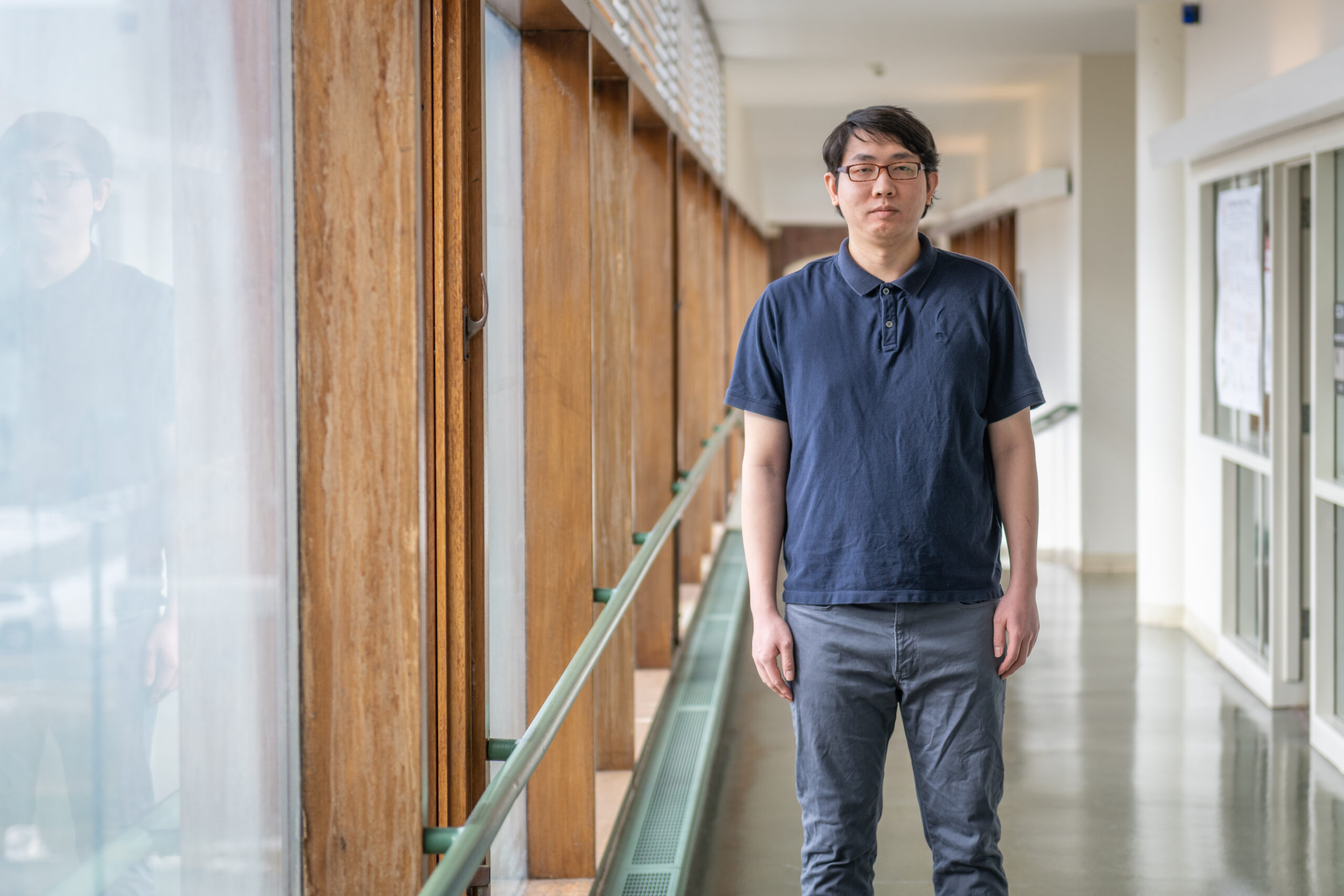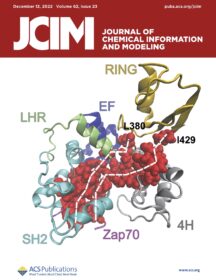Study traces the information pathways within proteins

Research by a Clark doctoral student and two professors, which could one day be used for cancer treatment, has been published on the cover of the Journal of Chemical Information and Modeling. Tianyi (Ted) Yang, a Ph.D. candidate in chemistry, collaborated with his advisor, Shuanghong Huo, a chemistry professor and the Carl J. and Anna Carlson Endowed Chair in chemistry, and Li Han, professor of computer science, to examine information pathways specific to the E3 enzyme.
Information can travel from one end of a protein to the other end along multiple paths, similar to a network of roads. By way of comparison, consider that there are several ways to get from Worcester to Boston, including the Massachusetts Turnpike and Route 9, among other less-traveled roads.
“You can see if there are common pathways,” says Huo. “Because there are multiple pathways, we look at whether there’s traffic or a bottleneck.”

E3 is the third in a trio of enzymes that transfers ubiquitin, a small protein, to a target protein for recycling, a function that removes unnecessary proteins from a human cellular environment. Ubiquitin acts as a tag, essentially labeling proteins that must be recycled.
“This enzyme has to undergo large conformational change,” says Huo. “It’s like one hand holds the ubiquitin and the other hand holds the target protein to be recycled. To bring these two together, you create the tag to the protein.”
Continuing the analogy to road travel, amino acid residues in the information pathways are similar to traffic bottlenecks. Amino acid is crucial for the information to pass. Yang, Huo, and Han sought to discover how information can pass through multiple domains if the target protein is located on the other end of the E3 enzyme.
That’s where Han’s expertise comes in. Using her knowledge of graph-theoretical approach, the group analyzed information pathways by plotting all the avenues and looking for common networks, similar to plotting routes from Worcester to Boston on a map.
Their approach is important because it could be used in the future as a model system for engineering proteins that manipulate the information pathway for targeted drug degradation. That means it could apply to mutations that cause blood cancer or Alzheimer’s disease, says Huo.
This research is part of Yang’s thesis and is preparation for his desired career path in the pharmaceutical industry, where he wants to use computers to design new drugs.
“This is very good practice for me to understand how to use this kind of software, how to write code, and how to perform analysis,” he says.
Yang won the anniversary award at the Protein Society’s 35th annual symposium in 2021, presenting a poster titled “Dynamic features of the unactivated c-Cbl.”
Huo and Han have been collaborating on research projects for 20 years. Han takes her computer science expertise and applies computational and mathematical strategies to scientific problems that have human implications.
“Together, we identified computer science approaches and applied them to protein folding, protein aggregation, and this pathway study,” says Han. “This has been a very inspiring and productive journey.”


